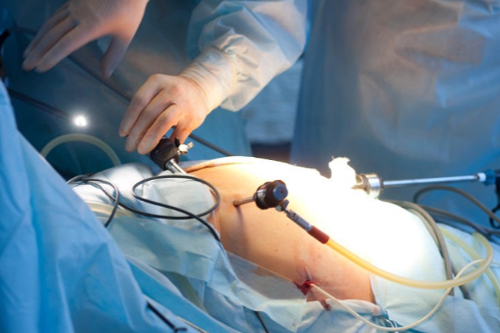Gynecological surgery In Nagpur

Gynecological surgery In Nagpur refers to surgical procedures that focus on the female reproductive system and related structures. These surgeries are performed by gynecologists, who are medical doctors specializing in women’s reproductive health. Gynecological surgery can be conducted for various reasons, including diagnostic, therapeutic, and elective purposes.
Gynecological surgery can be necessary for medical conditions, such as cancer or severe reproductive health issues, or elective for personal or cosmetic reasons. Advances in surgical techniques, including minimally invasive procedures, have improved recovery times and reduced complications for many gynecological surgeries.
Why Need Gynecological Surgery
Reproductive Organ Issues: Uterine Fibroids: Surgery, such as a myomectomy, may be necessary to remove noncancerous growths in the uterus causing symptoms like pelvic pain and heavy menstrual bleeding.
Endometriosis: Surgical procedures, including laparoscopy, may be performed to remove or manage endometrial tissue growing outside the uterus.
Cancer Treatment: Surgery is often a primary treatment for gynecological cancers, including ovarian, cervical, uterine, and vulvar cancers. The goal is to remove cancerous tissues and, in some cases, neighboring lymph nodes.
Uterine Conditions: Hysterectomy: Removal of the uterus may be recommended for conditions such as uterine cancer, persistent and severe uterine bleeding, or certain noncancerous growths.
Ovarian Conditions: Ovarian Cysts or Tumors: Surgery may be needed to remove cysts or tumors that are causing pain, affecting fertility, or raising concerns about cancer.
Fallopian Tube Issues: Ectopic Pregnancy: Surgical intervention is required when a fertilized egg implants outside the uterus, typically in a fallopian tube, posing a serious health risk.
Sterilization: Tubal Ligation: A surgical procedure for permanent contraception by blocking or sealing the fallopian tubes.
Pelvic Pain Management:
Surgical interventions may be considered for managing chronic pelvic pain caused by conditions like adhesions, cysts, or endometriosis.
Infertility Treatment:
Certain surgical procedures, such as laparoscopic surgery, may be performed to treat conditions contributing to infertility, such as blocked fallopian tubes or endometriosis.
Process of Gynecological surgery
1. Preoperative Evaluation:
- Medical History: The patient’s medical history, including any preexisting conditions, medications, and allergies, is reviewed.
- Physical Examination: A thorough physical examination is conducted to assess the patient’s overall health and specific gynecological concerns.
- Diagnostic Tests: Preoperative tests, such as blood tests, imaging studies, and biopsies, may be performed to gather information about the patient’s condition.
2. Patient Preparation:
- Informed Consent: The patient is provided with information about the surgical procedure, potential risks, benefits, and alternatives. Informed consent is obtained before the surgery.
- Fasting: Depending on the type of surgery and anesthesia used, the patient may be instructed to fast for a certain period before the surgery.
3. Anesthesia:
- Anesthesia Administration: Anesthesia is administered to ensure the patient is comfortable and pain-free during the surgery. The type of anesthesia (general, regional, or local) depends on the nature of the procedure.
4. Surgical Procedure:
- Incision: The surgeon makes incisions as needed to access the reproductive organs. The size and location of the incisions depend on the type of surgery and whether it is performed using open surgery or minimally invasive techniques.
- Surgical Techniques: The surgeon uses appropriate instruments and techniques to perform the necessary procedures, such as removing tumors, repairing organs, or addressing other gynecological issues.
5. Monitoring and Support:
- Vital Signs: Throughout the surgery, the patient’s vital signs, including heart rate, blood pressure, and oxygen saturation, are closely monitored.
- Fluids and Medications: Intravenous fluids and medications may be administered as needed to maintain the patient’s well-being during the surgery.
6. Closure and Dressing:
- Closure of Incisions: After completing the surgical procedure, the surgeon closes incisions using sutures, staples, or adhesive strips.
- Dressing Application: Sterile dressings may be applied to the incision sites to protect them and promote healing.
7. Postoperative Care:
- Recovery Room: The patient is transferred to a recovery room where vital signs are monitored as the effects of anesthesia wear off.
- Pain Management: Pain medications may be provided to manage postoperative discomfort.
- Observation: The patient is observed for any immediate postoperative complications.
